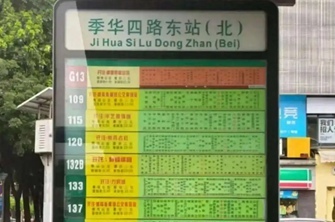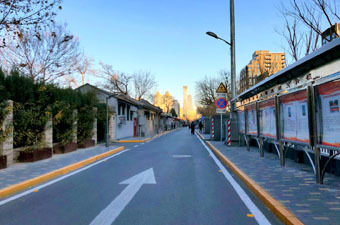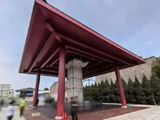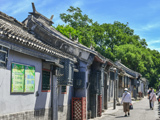Around the 2010s, the relationship between urban and rural areas in China took a revolutionary leap. As the post-80s and post-90s generation become the main force of labor migration, they follow the previous generation of farmers' departure from the village. However, most people choose not to return to the village or the countryside. Even the economic activities of farmers who return to the village have undergone significant changes.
The changes in the economic and social behavior of the "second generation of farmers" are triggering a historical transformation in the countryside. The viscosity of farmers and land has changed. The rural human land relationship, farmland rights, agricultural management system, agricultural development mode, village evolution, urban and rural relations and other aspects show new characteristics, marking a "urban and rural China" different from "rural China" With the arrival of, this stage presents new features.
Intergenerational revolution
In the migration of urban and rural population, the post-80s and post-90s have become the main force. Their behavior characteristics in economic and social aspects show significant intergenerational differences, even irreversibility, and become an important force leading the transformation of China's urban and rural relations.
They retained their status as farmers, but they no longer worked in agriculture. The second generation of farmers began to leave their hometown when they were almost at the working age. Their average age for the first time out to work was 21.7 years old. They were alienated from agriculture and land. They spent an average of 9 months outside each year. Unlike their predecessors, they went home to do farming when they were busy. 87.3% of them had never engaged in any agricultural production, The average annual time spent on agricultural activities is only 0.7 months. Their urban employment is abandoning the construction industry, which they are good at. Only about 10% of them are still engaged in this industry, but they are mainly engaged in more formal manufacturing and service industries, with more than 40% of each. The proportion of institutions, professional and technical posts is also increasing. Some of them have begun to choose self employment or production and operation as employers. Their education level is higher, with the average length of education reaching 9.515 years, and that of the post-90s generation reaching 9.79 years. They have also received more job skills training than the farmers in the city. The improvement of human capital is more conducive to their work and life in the city. Their migration is farther away from their hometown, and their main choice is to move across provinces, go to the eastern region and large and medium-sized cities to work and do business. They value not only making money outside, but also family reunion and children's education. Since 2003, the number and proportion of migrant workers who go out with their families have been growing, reaching 21.27% in 2014. A large proportion of families take their children with them, and they receive education in the inflow area until they reach the junior high school level. During the senior high school, the parents will accompany their children back to the county until their children complete the college entrance examination.
Their lifestyle is basically urbanized. The consumption mode of the second generation of farmers in cities has become similar to that of their urban peers. They are willing to engage in leisure and entertainment activities through shopping malls, parks and other urban public facilities, and 70% of their income earned outside is consumed in cities. Unlike the farmers who have money to build houses in rural areas, they choose to buy houses in local counties and towns with their accumulated capital, which shows the tendency to "settle down in the city" rather than villages in the future. In 2016, migrant workers accounted for 17.8% of the total number of migrant workers, including 16.5% of those who bought commercial houses. The second generation of farmers are much more willing to buy houses than local agricultural residents. They have a strong desire to integrate into the city. The second generation of farmers enjoys a significantly higher proportion of social security in the workplace than the first generation of farmers. However, due to the separation of the wall between urban and rural areas, they have a stronger sense of not being accepted by the city. Their emotional connection with the countryside is getting farther and farther. Many people stay in the county or township hotels when they return home during the Spring Festival, drive back to the village, and then return to the city after a short stay. The "going out of the village and not returning to the village" of the second generation of farmers is changing the local society into a "homeland". The interpersonal relationship, rule of etiquette, informal rules, etc. of the traditional local society are facing serious impacts and challenges.
Historical transformation of agricultural development mode
Due to population migration, especially intergenerational changes, the opportunity cost of agricultural labor has risen, and the agricultural development model has undergone a historic transition. The first is the heterogeneity of traditional homogeneous small farmers. By 2012, pure agricultural households accounted for 18.28%, non-agricultural households 15.93%, agricultural part-time households 30.07%, and non-agricultural part-time households 35.72%.
Second, machinery replaces labor in agricultural input. The competition between agriculture and non-agricultural labor has intensified, the labor price has risen, and the labor input cost of crops has increased. From 1999 to 2015, the labor cost of major crops has increased, and the labor per mu has decreased. Farmers have adopted the strategy of reducing labor input, increasing machinery and capital input, bringing about a rapid growth of about 6% per year in the use of various types of agricultural machinery.
The third is the change of farmland management system. Land transfer has accelerated. In 2003, the land transfer rates in the east, middle and west were 9%, 11.6% and 3.86% respectively, and by 2013, they had reached 26%, 31% and 20% respectively. In 2015, the transfer rate of farmers' contracted land reached 33.29%, and the scale of transferred contracted land reached 447 million mu, 2.39 times that of 2010. The scale of land management has expanded, and the average cultivated land per household of farmers has increased from 7.88 mu to 8.23 mu between 2004 and 2012; The average area of cultivated land per worker increased from 6.54 mu to 9.42 mu from 2010 to 2016. On the basis of subcontracting and leasing, the transfer of agricultural land has taken the form of share cooperation and transfer.
Fourth, the momentum of agricultural development has changed. Since 2003, agricultural labor productivity has risen rapidly, and its growth rate has far exceeded land productivity. From 2000 to 2012, the average annual growth rate of agricultural labor productivity was 5.46%, the annual growth rate of agricultural per capita output value was as high as 14.11%, and the annual growth rate of average output per mu in the same period was only 1.73%. The traditional agricultural development model, which has long relied on high labor input to improve land yield per unit area, is turning to a modern agricultural development model that improves labor productivity.
Fifth, agricultural functions and forms have changed. Leisure agriculture and rural tourism have grown extremely rapidly since 2010. The number of tourists has increased from 300 million in 2008 to 400 million in 2010, jumped to 600 million in 2011, and continued to grow rapidly in 2014 and 2015, reaching 1.2 billion and 2.2 billion respectively.
The countryside has become irreversible
With the process of urbanization, it is inevitable that China's villages will shrink. In 1985, the number of administrative villages nationwide was 941000, and by 2016, it was reduced to 526000; The number of natural villages nationwide dropped from 3.77 million in 1990 to 2.61 million in 2016; In 1997, there were 5.358 million villagers' groups nationwide, which decreased to 4.478 million by 2016. The number of villages will be further reduced in the future, on the one hand, because the change of farming methods will lead to the expansion of villages and farming radius; On the other hand, the supply of public services needs a moderate scale after the reduction of village population.
At the same time, the differentiation of villages has intensified, and the activation and decline of villages coexist. Many villages will further decline due to the tendency of the second generation of farmers to go to the village and the complete urbanization of the third generation of farmers. Another kind of villages will revive or even prosper in the new urban-rural relationship. Some of them will be directly integrated into the city with the expansion of the city. Some villages may become "post stations" connecting the urban and rural areas. Others will be activated because of their own uniqueness and the efforts of human capital and entrepreneurs. These villages may have unique historical and cultural memories; Or can provide local, unique and safe products; Or have good leaders; Or find the way to sustainable development of modern agriculture.
The third is the great change of rural system and governance. With the change of rural economic activities and social relations, the kinship, geographical and human relations that maintain rural society have changed and become indifferent, the collective consciousness of villagers has decreased, and the centripetal force and cohesion of the village community have decreased. The village people became strangers as a result of the intergenerational revolution, the rule of etiquette gave way to the dominance of economic power, and the village governance structure, rules and order were evolving and changing further.
(Author Liu Shouying is a professor of School of Economics, Renmin University of China)














